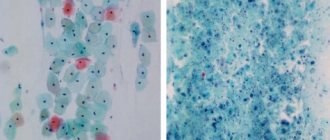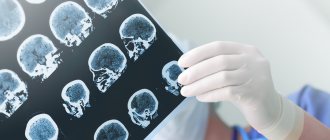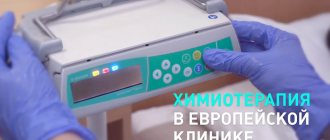Suprastin is perhaps the most famous anti-allergy drug.
A classic antihistamine with a pronounced antiallergic effect. This is a representative of the first generation of the group of antihistamines whose action is rapid, but not long-term. This is precisely what determines its relevance to this day as an emergency aid for lightning-fast allergic reactions and allergic shock. And even with the presence of a huge number of modern representatives of allergy medicine on pharmacy shelves, Suprastin continues to be present in our medicine cabinets to this day.
Pharmacological properties
Pharmacodynamics.
Chloropyramine, a chlorinated analogue of tripelenamine (pyribenzamine) is a first-generation antihistamine belonging to the group of ethylenediamines. in preclinical and clinical studies, as with the use of tripelenamine, the effectiveness of chloropyramine in the treatment of hay fever and other allergic diseases was revealed. The mechanism of action of the drug is to block histamine H1 receptors.
Suprastin reduces the severity of general symptoms of allergic diseases, in addition to antiallergic, has a sedative, hypnotic and antipruritic effect.
Very low doses of chloropyramine given to guinea pigs protected the animals from the effects of histamine, which was 120 times the lethal dose. The drug also acts on smooth muscles, capillary permeability and the central nervous system.
Pharmacokinetics. After oral administration, chloropyramine is rapidly absorbed from the gastrointestinal tract. The therapeutic effect develops within 15–30 minutes after use, reaches a maximum within the first hour after administration and lasts 3–6 hours. Chloropyramine is metabolized in the liver. It is excreted mainly in the urine in the form of metabolites. The drug may be eliminated faster in children than in adults.
If renal function is impaired, the elimination of the active substance may slow down.
In case of liver failure, a dose adjustment of the drug is necessary due to a decrease in the metabolism of chloropyramine.
Chloropyramine (Suprastin) - modern aspects of use in the treatment of allergic dermatoses
All these diseases are characterized by inflammatory changes in the skin and, almost always, severe itching. Traditionally, in the treatment of all the above-mentioned dermatoses, antihistamines were used, the effectiveness of which in different diseases was not the same, which today is the cause of much controversy regarding the advisability of using this group of drugs in the treatment of some dermatoses of this group.
Antihistamines traditionally occupy a special place among drugs used to treat dermatological processes, and have been successfully used by medical practitioners for many years. Representatives of the antihistamine series are divided by specialists into 2 groups (first and second generation). The allocation of a third generation of antihistamines, according to authoritative sources, is unfounded [13, 14].
The new generation of antihistamines is characterized by a prolonged action and the absence of a pronounced sedative effect. However, the list of medical indications for the use of this group of drugs is quite limited compared to first-generation drugs. Thus, the indications for the use of classical antihistamines, in addition to rhinitis and urticaria, also include: Quincke's edema, serum sickness, conjunctivitis, contact dermatitis, eczema, atopic dermatitis, allergic processes.
The need for antihistamine therapy for various allergic dermatoses is debatable and is practically not discussed only for urticaria, the development mechanism of which in most cases and to a greater extent is caused directly by allergic factors.
Every fourth to sixth person experiences urticaria at least once in their life; in 25% it has a chronic course [1]. Urticaria is caused by the release of inflammatory mediators, including histamine, from mast cells. In most cases, mast cell degranulation is the result of an IgE-mediated immediate allergic reaction or an immune complex allergic reaction with the formation of complement fragments C3a and C5a, causing mast cell degranulation [1]. Less commonly, direct, pseudo-allergic release of mediators by mast cells is possible as a result of the action of drugs (radiocontrast agents, salicylates, benzoic acid preparations, opiates, codeine, etc.), food components or other substances. In some cases, urticaria can be triggered by physical influences (mechanical urticaria, pressure urticaria, cold, heat, light urticaria). Under certain circumstances, degranulation of mast cells may be associated with the effects of adrenaline and acetylcholine - mediators of the autonomic nervous system - with the development of the so-called cholinergic urticaria, characterized by the appearance of numerous small blisters against the background of physical activity with increased sweating, and adrenergic urticaria against the background of emotional stress. There are also aquagenic urticaria, caused by contact with water, and contact urticaria, associated with direct exposure of the skin to histamine-releasing toxins upon contact with certain plants (nettle) or insects.
The result of the release of biologically active substances is the expansion and increase in the permeability of small vessels with the release of plasma into the surrounding tissue, which is clinically accompanied by edema and the formation of a blister. Due to their ability to block histamine receptors, antihistamines significantly reduce the effects of histamine and eliminate or significantly reduce the symptoms of almost all types of urticaria, with the exception of rare cases caused by exposure to mast cell mediators (leukotrienes, prostaglandins, cytokines) or autoantibodies against IgE (autoimmune urticaria) [1 ].
Traditionally, the term “antihistamines” refers to drugs that block H1-histamine receptors, which are used to relieve allergic reactions, in contrast to drugs that block H2 receptors, which are commonly called H2-histamine blockers and which are used to reduce secretion in gastrointestinal diseases.
Antihistamines block the effect of histamine on H1 receptors through competitive inhibition, but their affinity for histamine receptors is much lower than that of histamine [3]. They block unoccupied or released receptors. Accordingly, H1 blockers are effective for immediate allergic reactions.
As already indicated, antihistamines, based on the time of creation, are divided into first and second generation drugs. Second-generation drugs are distinguished by high specificity and affinity for H1 receptors in the absence of influence on receptors for other biologically active substances (choline and serotonin) and minimal sedative effect due to the weak permeability of the blood-brain barrier, which undoubtedly determines the pathogenetic feasibility of using second-generation antihistamines in therapy of various forms of urticaria with the development of an immediate allergic reaction.
However, the pathogenesis of other so-called allergic dermatoses is much more complex and not so clear-cut. Allergic contact dermatitis develops as a result of delayed-type hypersensitivity to chemicals that come into contact with the skin [3] and, possibly, a failure of the skin barrier function. The pathogenesis of toxidermia includes immune (immediate allergic reactions, cytotoxic allergic reactions, immunocomplex allergic reactions, delayed allergic reactions) and non-immune mechanisms (hereditary enzyme deficiency, local irritant effect of the drug, cumulation, idiosyncrasy, combined effect of the drug and ultraviolet radiation, etc.) [1].
In the pathogenesis of eczema and atopic dermatitis, as well as the non-atopic variant of diffuse neurodermatitis (diffuse neurodermatitis of adults without previous manifestations of atopy), in addition to allergic mechanisms, perhaps an even greater role is currently assigned to acquired and congenital defects in the barrier function of the skin [3], weakness of the immune system ( at the level of subpopulations of T-lymphocytes) [4] and neurological mechanisms (autonomic dysfunction, one of the manifestations of which is white dermographism, functional disorders of the central nervous system and dysfunction of the skin receptor apparatus), aggravated by intense and constant itching [2] and leading to ultimately, to neuroendocrine changes, disturbances in the digestive tract and metabolic processes, aggravating the disease. The painful itching of the skin, characteristic of these diseases, significantly reduces the quality of life of patients, causes insomnia and the development of neurotic disorders.
This explains the lack of effectiveness of second-generation antihistamines in these diseases, which is confirmed by clinical experience. Drugs in this group have an insufficient antipruritic effect, while the key to successful therapy for atopic dermatitis, according to the general opinion of dermatologists, is currently effective antipruritic therapy that can quickly break the vicious pathogenetic circle characteristic of this disease “scratching - itching - increasing clinical manifestations diseases" [3].
The sensation of itching, as well as the sensation of pain, is caused by the transmission of nerve impulses along the lateral spinothalamic tract in the spinal cord. In this case, the central perception of the feeling of itching is provided by the primary sensory cortical structures of the brain located in the left hemisphere, and the feeling of itching occurs even with minimal inflammatory changes in the epidermis [5]. In addition, when skin neuroreceptors are irritated through mechanical action during scratching, the signal enters the central nervous system and the response is directed back to the skin like an axon reflex and causes the release of neuropeptides that promote degranulation of mast cells with the release of histamine and other inflammatory mediators (serotonin, acetylcholine, etc.) .d.). It is believed that they play a significant role in the pathogenesis of itching and are pathogenic irritants of nociceptors, causing the appearance of subjective sensations [5]. In addition, the process of alteration of skin tissue as a result of scratching also promotes the release of biologically active substances (histamine, serotonin, lysosomal enzymes, kinins, prostaglandins, etc.), which increase inflammation [6], which is accompanied by increased itching, which contributes to the aggravation of the disease over a long period of time. functional disorders of the nervous system and the formation of a vicious pathogenetic circle “scratching – itching – scratching”. There is evidence that immunosuppression and a state of sensitization in patients with eczema and atopic dermatitis (diffuse neurodermatitis) develop against the background of functional disorders of the central nervous system and autonomic dystonia syndrome with a predominance in the cerebral cortex of processes of stagnant excitation, less often - inhibition, worsening the functional state of neurons , and inhibition of the sympathetic and excitation of the parasympathetic nervous system with a decrease in the achetylcholine/adrenaline ratio to 0.5–0.05 (in the healthy group - 0.87). It is necessary to take into account that, since it is the sympathetic nervous system that under normal conditions provides a positive immunotropic effect, the weakening of its tone is accompanied by a decrease in the immune response and the development of sensitization [7]. On the other hand, an excessive concentration of neurotransmitters (acetylcholine and serotonin) in conditions of increased tone of the parasympathetic nervous system can itself cause the so-called neurogenic itch [5]. Parasympathetic regulatory influences, in addition to reducing the immune response, lead to an increase in the content of cGMP in cells, which activates the production of allergy mediators, including histamine [7].
First generation antihistamines are characterized by less high specificity and affinity for H1 receptors. In addition to histamine, they can block cholinergic, muscarinic and serotonin receptors. Drugs of this group penetrate the blood-brain barrier and bind to the H1 receptors of the brain, while simultaneously blocking central serotonin and acetylcholine receptors, which, obviously, is responsible for their sedative effect [3], the severity of which differs from drug to drug and depends on the individual characteristics of the patient, they also have a pronounced local anesthetic effect. Thanks to the listed mechanisms, first-generation antihistamines have a pronounced antipruritic effect not only for allergic dermatoses, but also for skin itching of other etiologies not related to allergic mechanisms. The sedative and antipruritic effect of first-generation drugs, along with antihistamine activity, is undoubtedly of particular importance in the treatment of allergic dermatoses, one of the manifestations of which is painful itching, which increases significantly at rest and at night. Disturbances in sleep and rest due to itching lead to depression of the emotional sphere, the formation of chronic fatigue syndrome and aggravate the clinical manifestations of dermatosis.
Many of the drugs in this group are also available in parenteral forms, which makes it possible to avoid the influence of gastrointestinal pathology on the pharmacodynamic properties of the drug and to obtain a predictable and expected effect even with severe disorders of the gastrointestinal tract function. The central anticholinergic effect, antiemetic and anti-sickness effect of some drugs in this group, as well as the ability to inhibit the excitability of vestibular receptors allow their use in motion diseases. Some of the drugs in this group have an antitussive effect due to their direct effect on the cough center in the medulla oblongata. Due to their effect on serotonin receptors, first-generation antihistamines can have analgesic, anticonvulsant and antipyretic effects [1, 7]. At the same time, it is necessary to remember about the possibility of enhancing the sedative effect of first-generation antihistamines when combined with alcohol and psychotropic drugs and the impossibility of using them during work that requires concentration and attention.
Atropine-like reactions associated with the anticholinergic properties of drugs can in some cases cause dry mouth and nasopharynx, constipation, tachycardia and visual impairment, however, these same properties ensure the effectiveness of first-generation drugs for non-allergic rhinitis and atopic dermatitis without the presence of reagin antibodies and variants of urticaria without anaphylactic antibodies (cholinergic, heat, etc.), associated mainly with autonomic imbalance.
It should be noted that first-generation antihistamines are characterized by a short-term effect, including side effects, which, with a relatively rapid onset of clinical effect, allows you to choose the optimal dosage regimen during the day.
Due to the pronounced sedative, antipruritic and anticholinergic effect in combination with high antihistamine activity, it is the first generation drugs that can be effectively used in the complex pathogenetic therapy of allergic dermatoses (urticaria, allergic contact dermatitis, toxicerma, various forms of the process, atopic dermatitis and the non-atopic variant of diffuse neurodermatitis), which is confirmed everyday, including international, clinical experience [1, 2].
One of the most common, effective and safe first-generation antihistamines is Suprastin (chloropyramine), a classic antihistamine from the ethylenediamine group. Suprastin blocks H1-histamine and muscarinic receptors, penetrates the blood-brain barrier, has a pronounced antihistamine, m-anticholinergic effect, moderate peripheral anticholinergic activity, sedative, antiemetic and antispasmodic effects [3]. The therapeutic effect of Suprastin develops within 15–30 minutes. after oral administration, reaches a maximum within the first hour and lasts at least 3–6 hours. The drug is almost completely absorbed from the gastrointestinal tract, well distributed in the body, intensively metabolized in the liver, and excreted mainly by the kidneys. In children, excretion occurs faster.
Official indications for the drug are: urticaria, angioedema (Quincke's edema), serum sickness, seasonal and year-round allergic rhinitis, conjunctivitis, contact dermatitis, itching, acute and chronic eczema, atopic dermatitis, food and drug allergies, allergic reactions to bites insects The drug can be prescribed to children from 1 month.
When taken orally, it can be prescribed 2–3 times a day. It can be administered parenterally - intramuscularly, in acute severe cases intravenously (under the supervision of a physician), which is especially important in the treatment of children, patients suffering from severe and widespread forms of allergic dermatoses, as well as in patients with concomitant gastrointestinal pathology.
With long-term use of the drug, it is necessary to remember the possibility of a decrease in antihistamine activity (2-3 weeks). If necessary, a combination of Suprastin with second generation H1 receptor blockers is possible.
And, of course, it is necessary to take into account that the maximum clinical effect in the treatment of allergic dermatoses using first-generation antihistamines can only be achieved with complex therapy that takes into account all known mechanisms of pathogenesis, and which should include rational elimination measures, a reasonable diet, and elimination of contact with causative allergens, reducing the impact of unfavorable nonspecific factors, an adequate regime of water procedures, optimal local anti-inflammatory and antipruritic therapy, which in no way aggravates the violation of the barrier function of the skin, as well as therapy aimed at restoring the barrier function of the epidermis.
Personal clinical experience indicates that Suprastin plays an indispensable role in the combination therapy of various forms of urticaria, especially idiopathic, cholinergic and adrenergic, allergic contact dermatitis, various forms of eczema (including the most common nummular and dyshidrotic), atopic dermatitis and the non-atopic variant of diffuse neurodemitis ( especially in the stage of severe itching, when second-generation antihistamines, due to their selective effect on H1-histamine receptors, are practically unable to influence its intensity). And the appointment of Suprastin in an outpatient setting 1–2 times a day and only during the period of the end of active activity with high reliability allows you to avoid the unpleasant consequences of its sedative effect during the period of activity of patients. At the same time, the presence of an injectable form significantly increases the possibility of using the drug, including cases against the background of severe gastrointestinal dysfunction, which can significantly change the pharmacokinetics of oral drugs.
Application
The tablets are recommended to be taken orally during meals, without chewing and with a sufficient amount of liquid.
The daily dose for adults is usually 75–100 mg (3–4 times a day). For children aged 3–6 years - ½ tablet 2 times a day; 6–14 years — ½ tablet 2–3 times a day.
The dose can be increased depending on the patient's response and the development of side effects. The daily dose for children should not exceed 2 mg/kg body weight. The maximum daily dose is 4 tablets (100 mg). Therapy is considered complete after the symptoms of the disease disappear. If adverse reactions are detected, treatment with the drug must be discontinued.
Suprastin injection solution can only be administered by a doctor or nurse. Injections are administered intramuscularly. In case of anaphylactic shock or acute, severe allergic reactions, treatment is recommended to begin with intravenous administration of Suprastin, and then switch to intramuscular injections or oral tablets. The duration of therapy is determined by the doctor.
Adults. The daily dose for adults is usually 1–2 ml.
Children. Recommended starting dose:
- children aged 1–12 months: ¼ ampoule (0.25 ml);
- children aged 1–6 years: ½ ampoule (0.5 ml);
- children aged 6–14 years: ½–1 ampoule (0.5–1 ml).
In this case, it is necessary to use an insulin syringe with a long needle for intramuscular injection.
The daily dose for a child should not exceed 2 mg/kg body weight.
Liver dysfunction. A dose reduction may be necessary because liver disease reduces the metabolism of the active substance.
Renal dysfunction. If renal function is impaired, it is necessary to reduce the dose of the drug, since the active substance is excreted primarily by the kidneys.
Suprastin for pregnant women
Suprastin during pregnancy
Suprastin is not used for the treatment of pregnant women and mothers during breastfeeding. Such caution is dictated by the lack of reliable and complete clinical studies on the effect of the drug on pregnant women, as well as on women and children during breastfeeding. However, there is evidence, not statistically confirmed in clinical settings, that when Suprastin is taken in the last two weeks of pregnancy, the fetus develops connective tissue located behind the lens of the eye. Judging by the annotation, taking Suprastin in the 1st trimester, during the 2nd and in the last weeks of the 3rd trimester is prescribed exclusively by the attending physician after assessing the risks to the fetus and the expected benefits to the mother.
Contraindications
Pills. hypersensitivity to any ingredient of the drug; acute attack of asthma; angle-closure glaucoma; stomach ulcer; acute myocardial infarction; arrhythmia; simultaneous use of MAO inhibitors; urinary retention, prostatic hypertrophy; hypersensitivity to other ethylenediamine derivatives.
Solution for injections. Hypersensitivity to any ingredient included in the drug; acute attack of asthma; acute myocardial infarction, arrhythmias; benign prostatic hyperplasia; angle-closure glaucoma; simultaneous use of MAO inhibitors.
Side effects
From the central nervous system: sedation, increased fatigue, dizziness, ataxia, nervousness, trembling, convulsions, headache, euphoria, encephalopathy, blurred vision, drowsiness, deterioration of psychomotor functions.
From the cardiovascular system: arterial hypotension, tachycardia, arrhythmia.
From the digestive tract: pain and discomfort in the epigastric region, dry mouth, nausea, vomiting, diarrhea, constipation, anorexia, increased and decreased appetite, increased severity of symptoms of gastroesophageal reflux.
Blood disorders: leukopenia, agranulocytosis, thrombocytopenia, hemolytic anemia, other pathological changes in the blood.
From the organs of vision: increased intraocular pressure, glaucoma.
From the kidneys and urinary system: dysuria, urinary retention.
From the skin and subcutaneous tissue: photosensitivity, allergic reactions.
From the musculoskeletal system and connective tissue: myopathy.
From the immune system: allergic reactions, including skin hyperemia, rashes, itching, urticaria, angioedema.
For the drug in the form of an injection solution also: changes at the injection site.
special instructions
Elderly patients, weakened patients. the drug is prescribed with extreme caution to these patients, since they are more sensitive to certain side effects of antihistamines (dizziness, drowsiness, decreased blood pressure).
Liver dysfunction. A dose reduction may be necessary because liver disease reduces the metabolism of the active substance.
Due to the anticholinergic and sedative effects of the drug, special caution should be used when using it in elderly patients, with impaired liver function or cardiovascular disease.
If the drug is used late in the evening, the severity of symptoms of gastroesophageal reflux may increase.
When chloropyramine hydrochloride is used in combination with ototoxic drugs, the symptoms of ototoxicity may be masked.
Alcohol enhances the calming effect of chloropyramine on the central nervous system; therefore, during treatment it is necessary to avoid drinking alcoholic beverages.
Long-term use of antihistamines can rarely cause disorders of the hematopoietic system (leukopenia, agranulocytosis, thrombocytopenia, hemolytic anemia). If undesirable effects are observed during long-term use of the drug (fever, laryngitis, formation of ulcers on the oral mucosa, pallor, jaundice, hematomas, bleeding), it is necessary to stop treatment and monitor blood counts.
One tablet contains 116 mg of lactose. Patients with hereditary galactose intolerance, Lapp lactase deficiency or glucose-galactose malabsorption should not use this drug.
Use during pregnancy or breastfeeding. There are no preclinical data for use in animals. The use of the drug during pregnancy and breastfeeding is contraindicated.
There are no adequate and well-controlled clinical studies in pregnant women, although retrolental fibroplasia has been described in neonates whose mothers received antihistamines during the last 2 weeks of pregnancy.
The ability to influence reaction speed when driving vehicles or working with other mechanisms. During use of the drug, especially in the first period of treatment, the drug may cause drowsiness and deterioration of psychomotor functions (see SPECIAL INSTRUCTIONS). Thus, taking into account possible adverse reactions from the nervous system, driving vehicles or other mechanisms is prohibited at the beginning of therapy for a period determined individually.
Children. Suprastin tablets are used in children over 3 years of age. Suprastin, solution for injection, can be used in children from 1 month. Contraindicated for use in newborns and premature infants.
Special recommendations.
Elderly patients, as well as those with impaired liver and/or kidney function, cardiovascular system, angle-closure glaucoma, urinary retention, prostatic hyperplasia, should take the drug with caution.
In newborns whose mothers took antihistamines in the last months of pregnancy, there have been cases of neonatal retrolental fibroplasia. Accordingly, the use of Suprastin® during pregnancy is contraindicated.
The use of Suprastin® is contraindicated during breastfeeding. If it is necessary to use the drug during lactation, breastfeeding should be stopped.
The drug, especially in the initial period of treatment, may cause drowsiness, fatigue and dizziness. Therefore, in the initial period, the duration of which is determined individually, driving vehicles or performing work associated with an increased risk of accidents is prohibited. After this, the degree of restriction on driving and operating machinery will be determined individually for each patient.
Interactions
MAO inhibitors increase and prolong the anticholinergic effect of suprastin. special care must be taken when prescribing the drug simultaneously with sedatives, barbiturates, hypnotics, tranquilizers, opioid analgesics, tricyclic antidepressants, atropine, muscarinic parasympatholytics due to the possibility of mutual potentiation of each other's effects.
Alcohol increases the severity of the depressive effects of the drug on the central nervous system; therefore, alcoholic beverages should be avoided during treatment.
When combined with ototoxic medications, warning signs of ototoxicity may be masked.
Antihistamines may prevent skin reactions in allergy testing, so such medications should be stopped several days before your scheduled skin allergy test.
Overdose
Intentional or accidental overdose of antihistamines can be fatal, especially in children. in case of an overdose of the drug, symptoms similar to atropine intoxication develop: hallucinations, anxiety, ataxia, impaired coordination of movements, athetosis, convulsions. in children the state of excitement dominates. may also detect dry mouth, dilated pupils, hot flashes, sinus tachycardia, urinary retention, and fever. in adults, fever and hot flashes are not always noted; the period of excitement is accompanied by convulsions and postictal depression. in addition, coma and cardiopulmonary collapse may develop, which can lead to death within 2–18 hours.
Due to the anticholinergic effect of the drug, the motor activity of the stomach may slow down, therefore, within 12 hours after an overdose, gastric lavage and administration of activated charcoal are necessary.
Monitoring of cardiopulmonary function is recommended. Treatment is symptomatic. A specific antidote is unknown.
Note!
Description of the drug Suprastin solution d/in. 20mg amp. 1ml No. 5 on this page is a simplified author’s version of the apteka911 website, created on the basis of the instructions for use.
Before purchasing or using the drug, you should consult your doctor and read the manufacturer's original instructions (attached to each package of the drug). Information about the drug is provided for informational purposes only and should not be used as a guide to self-medication. Only a doctor can decide to prescribe the drug, as well as determine the dose and methods of its use.
Suprastin during pregnancy
Despite the fact that the instructions say that the drug is prohibited for pregnant women, in some cases doctors prescribe Suprastin. A preliminary examination is carried out and the necessary tests are taken to assess the woman’s condition and the risk to the fetus. In the 1st trimester, taking the drug is not permissible. In the 2nd and 3rd trimester, in special cases, an appointment may be made under medical supervision.
Pregnant women are strictly prohibited from self-medicating.
Women who are breastfeeding should not take Suprastin, as the active substance can pass into breast milk.






